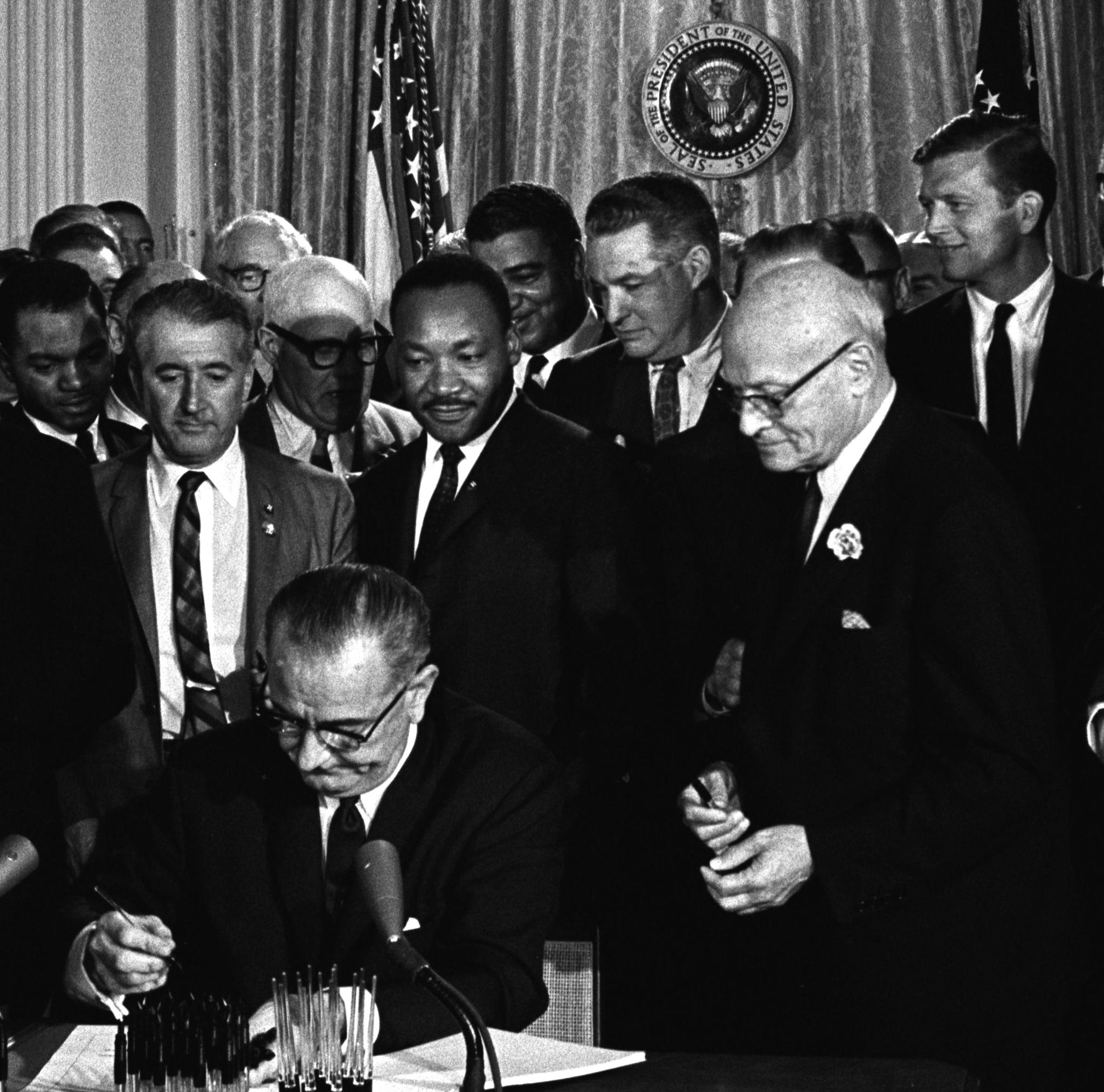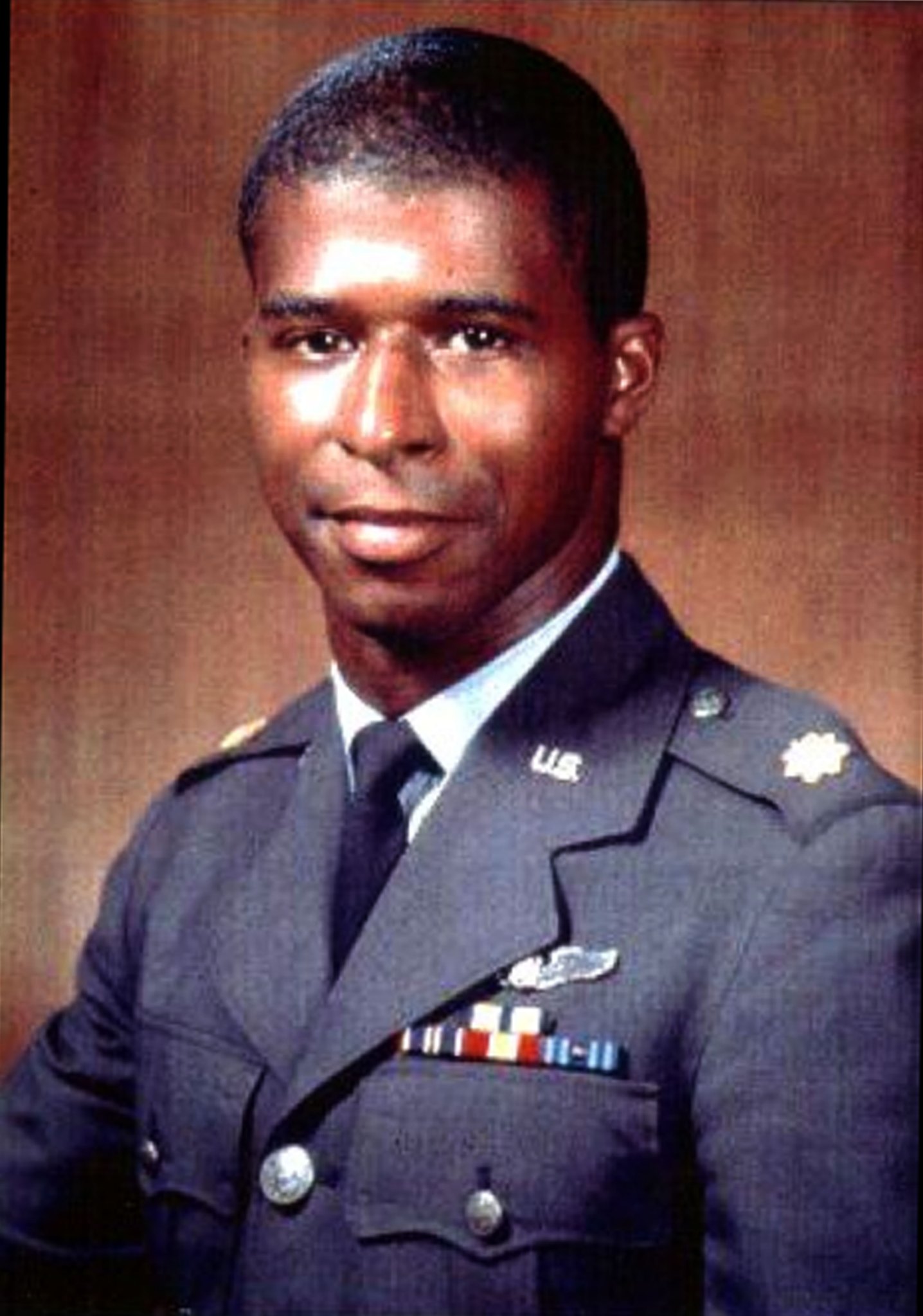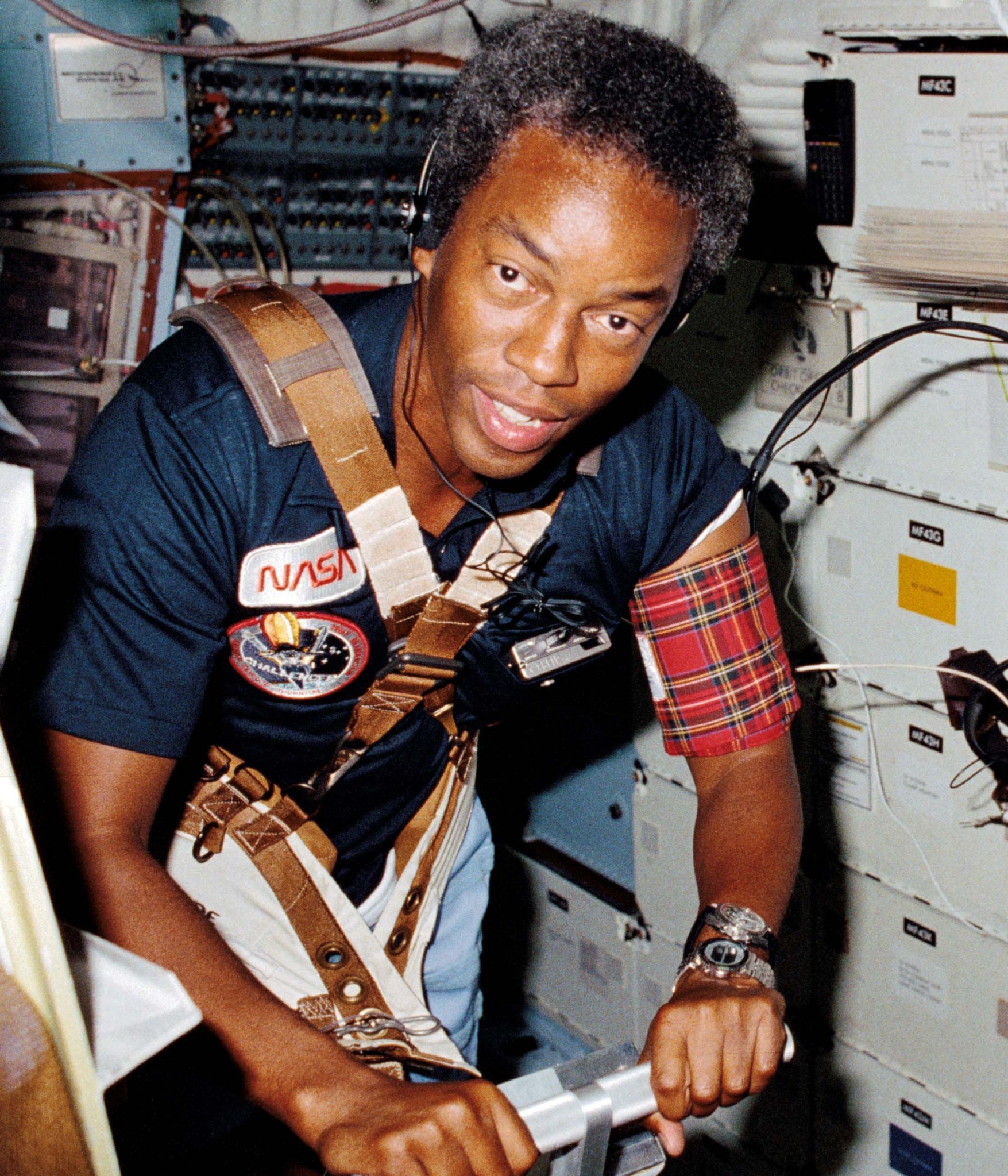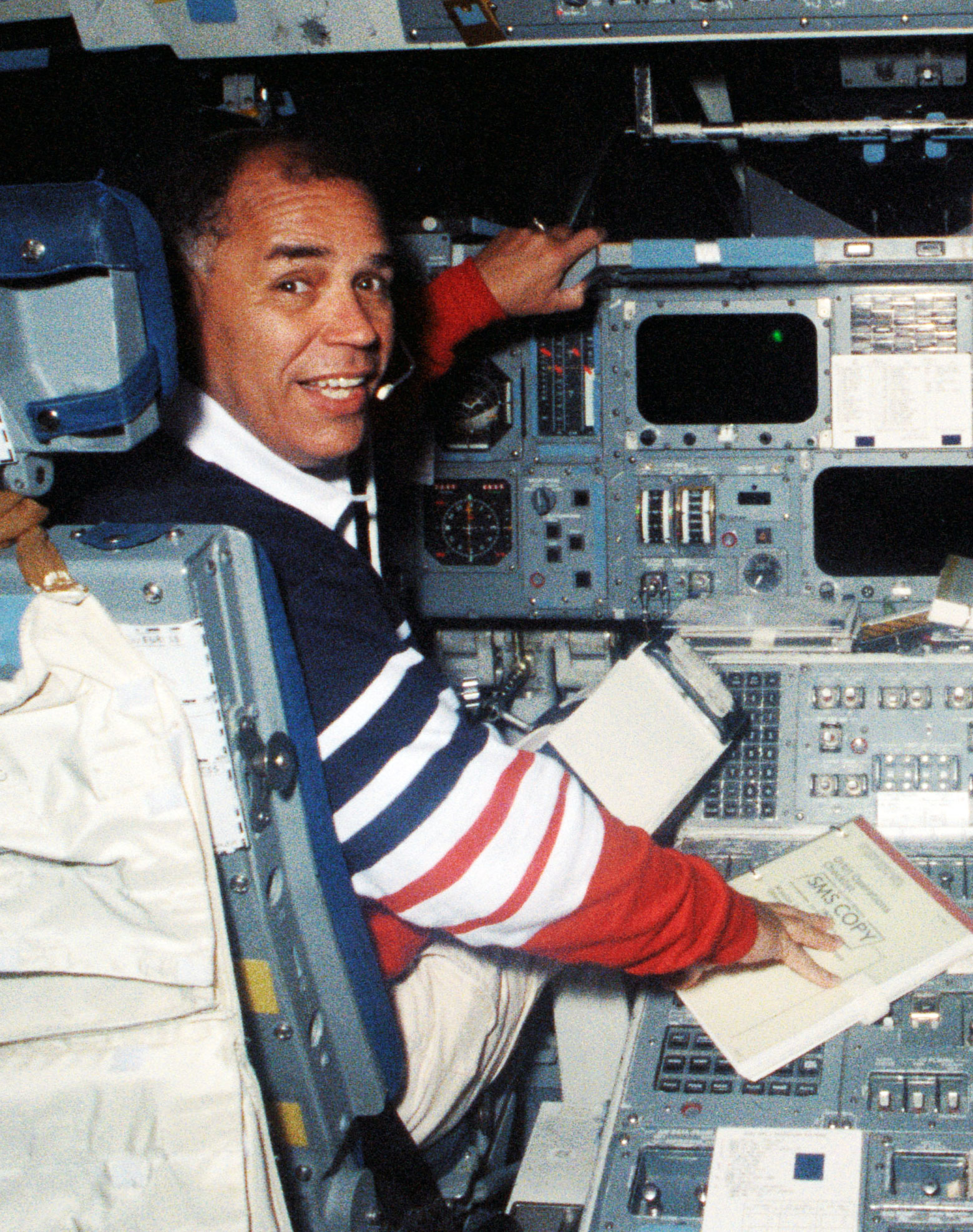For many Americans, 1961 began with a sense of anticipation. John F. Kennedy was sworn in as the new president, promising to reach for a “New Frontier.” Part of that growing excitement focused on the nation’s space agency which was on the verge of launching the first astronauts into space.
As background to the era, attention abroad concentrated on the Cold War with the Soviet Union. But closer to home, there was increasing unrest among those who were being left behind simply because of their race.
NASA soon would be thrust into the forefront of both issues.

On May 4, 1961, the first group of Freedom Riders, left Washington, D.C. for New Orleans. These civil rights activists traveled on interstate buses into the segregated areas of the nation, following years of non-enforcement of Supreme Court decisions which ruled segregated public transportation was unconstitutional.
News of the Freedom Riders protest soon was eclipsed. The next day at Cape Canaveral Air Force Station, NASA astronaut Alan Shepard was strapped into a Mercury spacecraft atop a Redstone rocket and propelled 116 miles into space.
Thousands of individuals with NASA, the military and industry made the historic achievement possible. While most of those involved were white males, the hiring landscape was quickly changing at the nation’s space agency.
Many of those following NASA knew the seven Mercury astronauts were based at the agency’s Langley Research Center in Hampton, Virginia. Among the African-Americans working there was a mostly unseen group of black women putting their extraordinary mathematical skills to work.
The group included Dorothy Vaughan who worked in the Langley Analysis and Computation Division. Mary Jackson was a specialist in analyzing information from wind tunnel experiments and aircraft data on flight tests. In the Guidance and Navigation Department, Katherine Johnson calculated the trajectory for Shepard’s spaceflight.
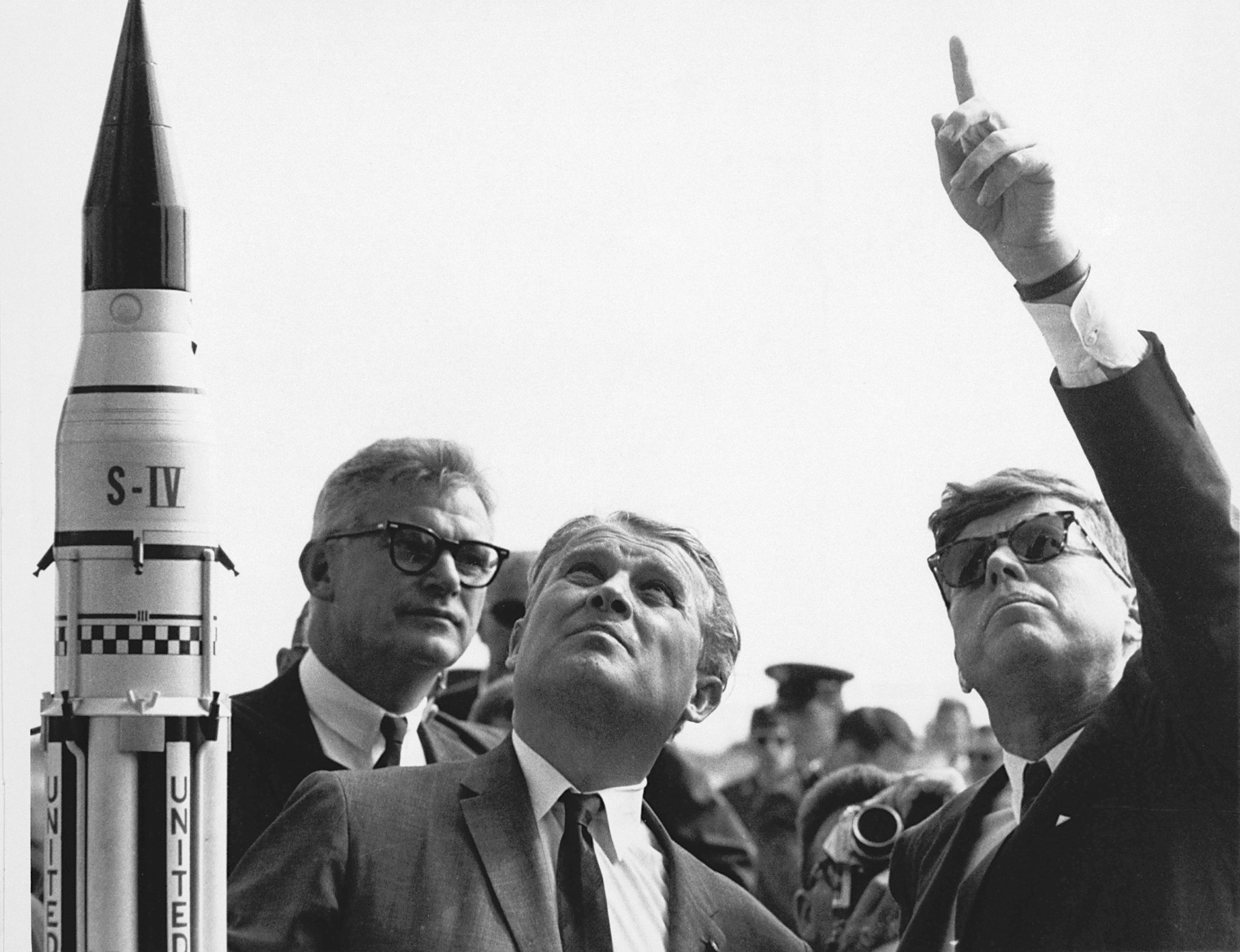
The story of the trio’s work in a white, male-dominated program soon will be featured in the upcoming motion picture “Hidden Figures,” based on a book of the same name by Margot Lee Shetterly. The film is due in theaters in January 2017.
Now 97, Johnson explains that at the time women mathematicians at Langley were called “computers.”
“The early (Project Mercury) trajectory was a parabola, and it was easy to predict where it would be at any point,” Johnson said. “When they said they wanted (Shepard’s) capsule to come down at a certain place, they were trying to compute when it should start. I said, ‘Let me do it. You tell me when you want it and where you want it to land, and I’ll do it backwards and tell you when to take off.'”
By the time NASA was preparing for the first Mercury orbital flight on Feb. 20, 1962, the agency was using electronic computers. However, astronaut John Glenn had so much faith in Johnson’s calculations, he insisted that she confirm the math produced by the new systems.
Vaughan, Jackson and Johnson were not the first African-Americans in the nation’s missile development and space exploration efforts.
When Julius Montgomery began work at Cape Canaveral as an electronics technician in 1956, he was the first black to serve there in a role other than janitor.
After earning a bachelor’s degree at Tuskegee Institute in Alabama, Montgomery served in the U.S. Air Force. During his time in the military, he earned a first class radio-telescope operator’s license. Looking for an opportunity to use his technical background, he applied for and was hired to work in the Cape’s RCA Development Lab.
During Montgomery’s first day on the job, most of his all-white coworkers refused to shake his hand or even speak to him.
He persevered, working primarily among those known as “range rats.” Their efforts involved radar, telemetry, tracking and repairs for classified military missiles.
Montgomery later made history when he decided to add to his educational background. He was the first African-American to desegregate and graduate from Brevard Engineering College, now the Florida Institute of Technology in Melbourne, Florida.
While blacks were beginning to find jobs in the space business, advancement was another hurdle.
Frank Crossley was the first African-American to earn a doctorate in metallurgical engineering. When he approached his superiors at Lockheed Missiles and Space Company, seeking equal status with his peers, he was told, “You are qualified to be a senior member, but because you are so advanced for a Negro, we thought you were content.”
Crossley too persisted becoming a pioneer in the field of titanium metallurgy receiving seven patents, including five in titanium base alloys used in the aerospace industry.
Three weeks after Shepard’s successful Mercury flight, Kennedy asked Congress to approve a massive effort to land a man on the moon by the end of the 1960s. While the nation rallied around the space program, racial unrest spread throughout the country as many were not content and the civil rights movement intensified.
During a June 11, 1963, speech to the nation, Kennedy called for Congress to enact legislation “giving all Americans the right to be served in facilities which are open to the public,” as well as “greater protection for the right to vote.”
Speaking at the 15th annual African-American History Month celebration on Feb. 21, 2014, the Florida spaceport’s deputy director, Janet Petro, noted that President Kennedy and Vice President Lyndon B. Johnson took steps to create more inclusive job opportunities as part of the buildup for the Apollo lunar landing program.
“In an unprecedented move, knowing that NASA was planning to hire approximately 200,000 people in Southern states,” she said, “recruiters were asked to travel around the country trying to persuade African-American scientists and engineers to work in the space program.”
NASA was encouraging African-Americans to come to work at facilities such as the Launch Operations Center (now Kennedy Space Center) in Florida, Marshall Space Flight Center in Alabama, Mississippi Test Facility (now Stennis Space Center) in Mississippi, the Michoud Assembly Facility in Louisiana and Manned Spacecraft Center (now Johnson Space Center) in Texas.
In 1964, Marshall began a Cooperative Education Program, recruiting at historically black colleges. NASA hired Charlie Smoot, who was one of those seeking black engineers to come south. As “co-ops,” students alternate semesters at school with semesters at agency centers. Students worked in paid positions directly related to their fields of study.
Smoot was successful in finding seven students to become the first African-American co-op engineers working for NASA.
But the challenge was locating a place for them to live. Segregated apartments and hotels were not available to blacks. Smoot found families in Huntsville’s African-American community to provide homes for the young engineers.
In a 1964 address on civil rights to contractors who were members of the Association of Huntsville Area Companies, Dr. Wernher von Braun, director of NASA’s Marshall Space Flight Center, spoke out against discrimination. He was particularly critical of laws such as poll taxes, which discouraged or prevented many African-Americans from voting. He compared these restrictions to the barrier that divided West Berlin from Communist East Berlin from 1961 to 1989.
“All these regulatory barriers form a ‘Berlin Wall’ around the ballot box,” he said. “I am not going to sit quietly on a major issue like segregation.”
According to Fred Schultz of General Electric’s Space Division, von Braun’s remarks gave association members “the backing they needed to launch further successful drives for equal employment opportunities.”
President Johnson also continued to press for landmark legislation that outlawed discrimination. He signed the Civil Rights Act on July 2, 1964, the same day it was passed by Congress.
“It’s really important that we take time to commemorate the 50th anniversary of the Civil Rights Act,” said Kennedy’s director, Bob Cabana, in July 2014. “It all started with President Kennedy in 1963; and after his assassination, it was President Johnson that actually brought it into law.”
While efforts in the mid-1960s was a start, Cabana noted that, initially, progress was slow.
“I look back at the Apollo Program and there were something like seven black employees working at the Kennedy Space Center,” he said. “It was an unbelievably small number. While we’re doing a lot better, we can always provide improved opportunities for minority employment.”
One of the steps to include minorities in the most visible area of space exploration was selection of those who would travel there.
America’s first black astronaut was U.S. Air Force pilot Robert Lawrence, who was selected in 1967 to fly aboard the Manned Orbiting Laboratory. The military program, which was cancelled in 1969, involved a small, single-use space station in which crews would launch and land in an advanced Gemini spacecraft. Unfortunately, six months after his selection, Lawrence was killed in a training accident.
Following Apollo, Skylab and the Apollo-Soyuz Test Project, NASA began gearing up for the Space Shuttle Program and, in 1978, announced the selection of 35 of the most diverse group of astronauts to date. In addition to a mix of pilots and mission specialists, the group included the first women and minorities.
From this group, Guy Bluford would go on to become the first African-American to fly in space in 1983 as a member of the STS-8 crew. When STS-33 launched in 1989, Fred Gregory became the first African-American to command a spaceflight. Ellison Onizuka was the first Asian-American astronaut. Sally Ride became the first American woman in space and Kathy Sullivan the first American woman to walk in space.
Two years later, the next class of astronauts included Charlie Bolden who would not only command two shuttle missions, but also go on to hold the agency’s top position as NASA administrator.
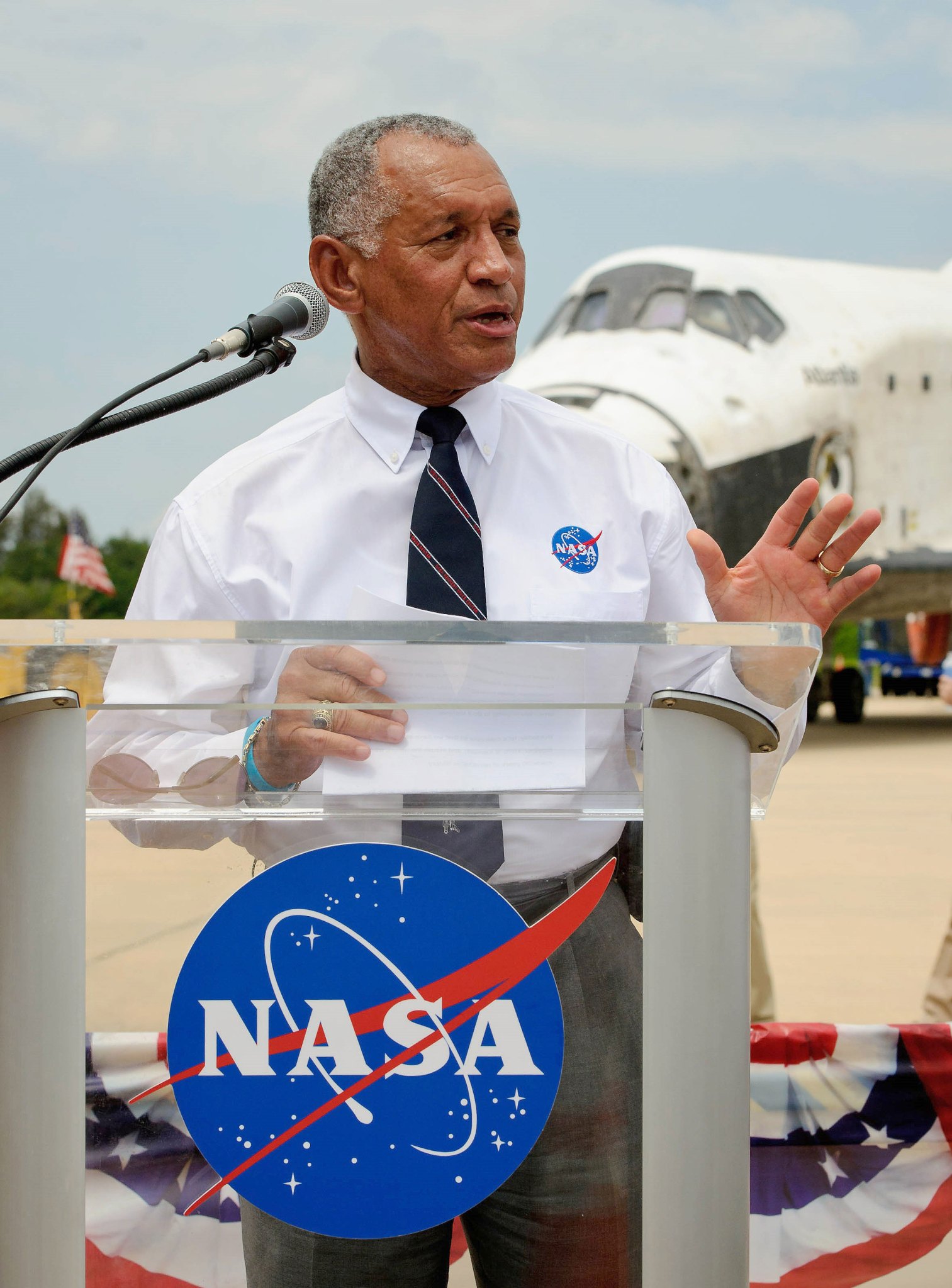
While astronauts may be the most visible part of NASA, by the 1980s, one in ten of the Kennedy Space Center’s civil service workforce was made up of minorities, increasing to 17 percent in the mid-1990s.
This progress was aided by NASA Administrator Dan Goldin and other agency leaders who, in 1993, developed initiatives such as the Science, Engineering, Mathematics and Aerospace Academy. The program was designed for pre-collegiate minority and female students. NASA also established university research center relationships with historically black colleges and universities in 1995.
NASA now offers extensive educational efforts including resources for educators and students at all grade levels, encouraging young people to pursue careers in science, technology, engineering and math, or STEM.
By 2007, minority hiring at Kennedy increased to 23 percent. Today, minorities make up 27.2 percent of just over 2,000 NASA civil service employees at the Florida spaceport.
While the Apollo Program was, in part, a response to competition in space with the Soviet Union, Kennedy and Johnson saw NASA as an additional opening for progress on Earth. It was a chance to kick-start equal employment opportunities for deserving, yet underrepresented, groups, allowing them to contribute to a government program receiving global attention.
“Everybody deserves to be treated equally and with respect,” Cabana said. “No one should ever be discriminated against for any reason.”



























